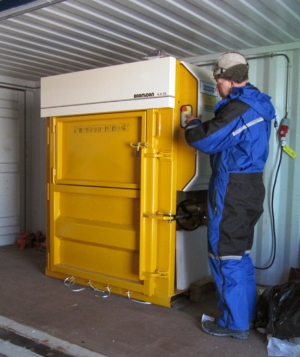Did you know that littering is illegal in Antarctica?The countries with activities in Antarctica have agreed that all waste produced during expeditions and at research stations must be sorted and shipped off the continent.

Antarctica is now a protected area dedicated to peace and research (Antarctic Treaty 1959). To maintain this nature preserve and maximise its value both as a pristine environment and a research laboratory, it is crucial that human activities have no impact on the environment. All planned activities in Antarctica must undergo an environmental impact assessment before they are allowed to begin. This means that anyone planning activities in Antarctica must submit a written evaluation where they describe all the possible consequences the activity might have for the environment, and what countermeasures will be taken to limit those consequences. This must be done before the people involved in the project are allowed even to set off for Antarctica (Protocol on environmental protection to the Antarctic Treaty 1991). For this reason, it is now prohibited to leave any waste whatsoever in Antarctica. This means that everything you take to Antarctica you must also take away with you. Including sewage. At the Norwegian research station Troll, waste is sorted into the following categories so it can be delivered for recycling, re-use, or proper treatment in South Africa: food waste/organic material, combustible material, plastic, metal, glass and hazardous waste. In addition to the ban on leaving waste behind, it is not permissible to release substances with a detrimental effect on the environment during work in Antarctica. Emissions from transport vehicles, primus stoves and the like are exempt from this ban because they are not considered environmentally damaging in small quantities. |
South Pole 1911–2011 is an informational outreach project run by the Norwegian Polar Institute
Contact person:


